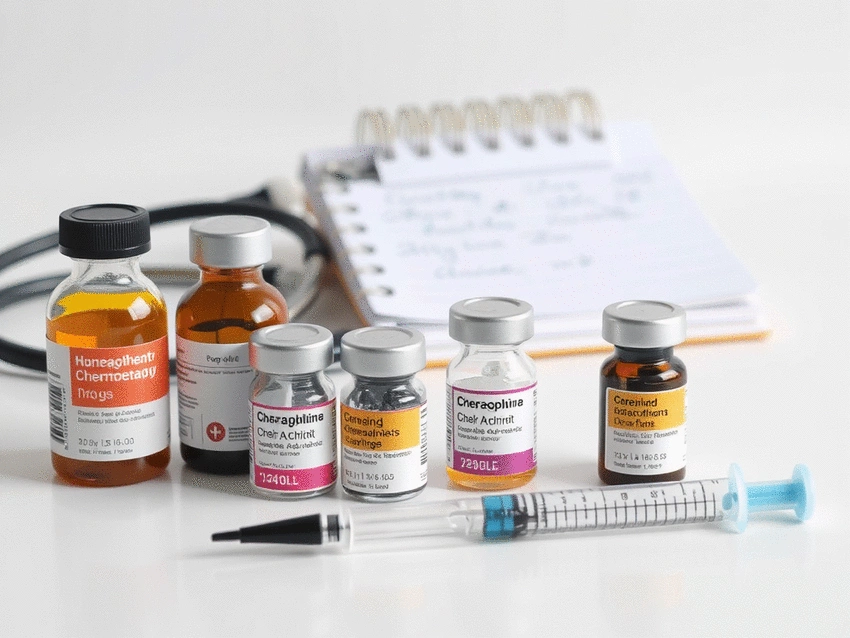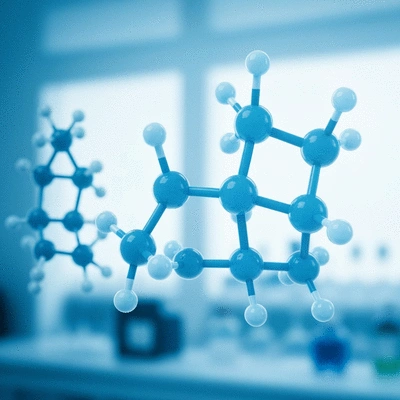Targeted Therapy vs. Traditional Chemotherapy
By Dr. Elise Carter / Nov 21
As cancer treatments evolve, understanding the intricacies of chemotherapy drug classes becomes crucial for patients navigating their care. Equipped with knowledge about these classifications, you can effectively engage with your healthcare team and feel more empowered during your treatment journey.
This visual outlines the primary chemotherapy drug classifications based on their mechanisms of action and common applications in cancer treatment.
Mechanism: Damage DNA, preventing cancer cells from dividing.
Use: Effective against a wide range of cancers, including leukemia, lymphoma, and some solid tumors.
Mechanism: Interfere with DNA and RNA synthesis, effectively starving cancer cells.
Use: Commonly used for leukemias, breast, ovarian, and gastrointestinal cancers.
Mechanism: Block cell division (mitosis), halting the growth of cancer cells.
Use: Often effective in breast cancer, lung cancer, lymphomas, and leukemias.
Mechanism: Disrupt enzymes involved in DNA replication and repair.
Use: Treats various cancers including lung, ovarian, and gastrointestinal cancers.
Mechanism: Focus on specific molecular targets associated with cancer growth.
Use: Highly specific, used for cancers with identified genetic mutations or protein overexpression (e.g., HER2+ breast cancer).
When it comes to navigating the complexities of chemotherapy, understanding the different drug classes is essential. Each class of chemotherapy drugs plays a unique role in fighting cancer. Through this comprehensive overview, I aim to demystify these classifications, enabling you to feel more informed and empowered during your treatment journey.
The journey through cancer treatment can be overwhelming, but knowing how these drug classes function can provide clarity. From their roles in disrupting cancer cell growth to understanding their specific mechanisms, equipping yourself with this knowledge can be a significant first step towards taking control of your care.
Chemotherapy is a vital component of cancer treatment, often used either as a primary therapy or in combination with other treatment modalities. It works by targeting rapidly dividing cells, which is characteristic of cancerous growths. This means that chemotherapy can hinder the growth of tumors, helping to shrink them or even eliminate them entirely. For a comprehensive overview of various chemotherapy drugs and their applications, you can consult resources like the American Cancer Society on Types of Chemo Drugs.
Understanding these roles can help you appreciate the comprehensive approach to cancer treatment. It’s important to discuss with your oncologist how chemotherapy fits into your specific plan, as each patient’s situation is unique.
Chemotherapy drugs are broadly classified into several categories based on how they work. This classification helps healthcare providers choose the most effective therapy tailored to a patient's specific cancer type. For an in-depth understanding of the principles, applications, and different drug classes, explore the insights provided by PMC NCBI on Cancer Chemotherapy. Here are some of the primary drug classes:
By understanding these classifications, you can engage in more informed discussions with your healthcare team about your treatment. Each class has its own unique implications for efficacy and side effects, which I will explore further in this article.
Antineoplastic agents are fundamental to chemotherapy, as they are specifically designed to combat cancer. These agents can vary significantly in their mechanisms and effects on the body. Some notably target specific pathways that cancer cells utilize for growth, while others have broader effects on rapidly dividing cells. To learn more about the mechanisms of action of common chemotherapy agents, refer to this detailed resource on NCBI Books on Chemotherapy Agents.
As we delve deeper into the specific drug classes in the following sections, you’ll see how these antineoplastic agents play a critical role in your treatment plan. This knowledge can help demystify the process and empower you throughout your cancer journey.
As you learn about chemotherapy drug classes and their functions, consider this: how do you envision your role in your treatment journey? Reflecting on your treatment options can empower you to take charge of your health.
As we dive deeper into the world of chemotherapy, understanding the various drug classifications is crucial for both patients and caregivers. Each class of chemotherapy drugs plays a unique role in targeting cancer cells, and grasping these distinctions can significantly empower patients during their treatment journey. Have you ever wondered how these drugs work together to combat cancer? By categorizing them into classes, we can streamline our approach to treatment and enhance our decision-making processes.
Not only does this knowledge help demystify the treatment options available, but it also fosters a sense of control and participation in one’s own care. Recognizing the mechanisms of action for each drug class can guide discussions with healthcare providers, allowing patients to explore personalized treatment plans that align with their specific needs.
Understanding the classifications of chemotherapy drugs is pivotal for effective cancer treatment. Each category comes with its own set of benefits and considerations. Here are some key reasons why this knowledge is essential:
By grasping these fundamentals, patients can feel more confident navigating their treatment options. As we continue to learn about these medications, it’s essential to stay informed about innovations and how they may change the landscape of chemotherapy.
The field of oncology is ever-evolving, with ongoing research paving the way for new treatments and methodologies. As I look into the future, I am excited about several trends that are emerging in chemotherapy:
These advancements hold great promise for enhancing patient outcomes. As we continue to explore these innovative approaches, my commitment at Types of Chemotherapy remains clear: to provide you with the best, evidence-based information to navigate your cancer journey effectively.
Here is a quick recap of the important points discussed in the article:



 Targeted Therapy vs. Traditional Chemotherapy
Have you considered how understanding cancer treatments can empower your journey? Knowledge not only
Targeted Therapy vs. Traditional Chemotherapy
Have you considered how understanding cancer treatments can empower your journey? Knowledge not only
 Nutrition Strategies for Chemotherapy Patients
Nutrition plays a critical role in supporting your body during chemotherapy. By making informed diet
Nutrition Strategies for Chemotherapy Patients
Nutrition plays a critical role in supporting your body during chemotherapy. By making informed diet
 Preparing for Your First Chemotherapy
Have you ever felt overwhelmed at the thought of a major medical treatment? The uncertainty and anxi
Preparing for Your First Chemotherapy
Have you ever felt overwhelmed at the thought of a major medical treatment? The uncertainty and anxi